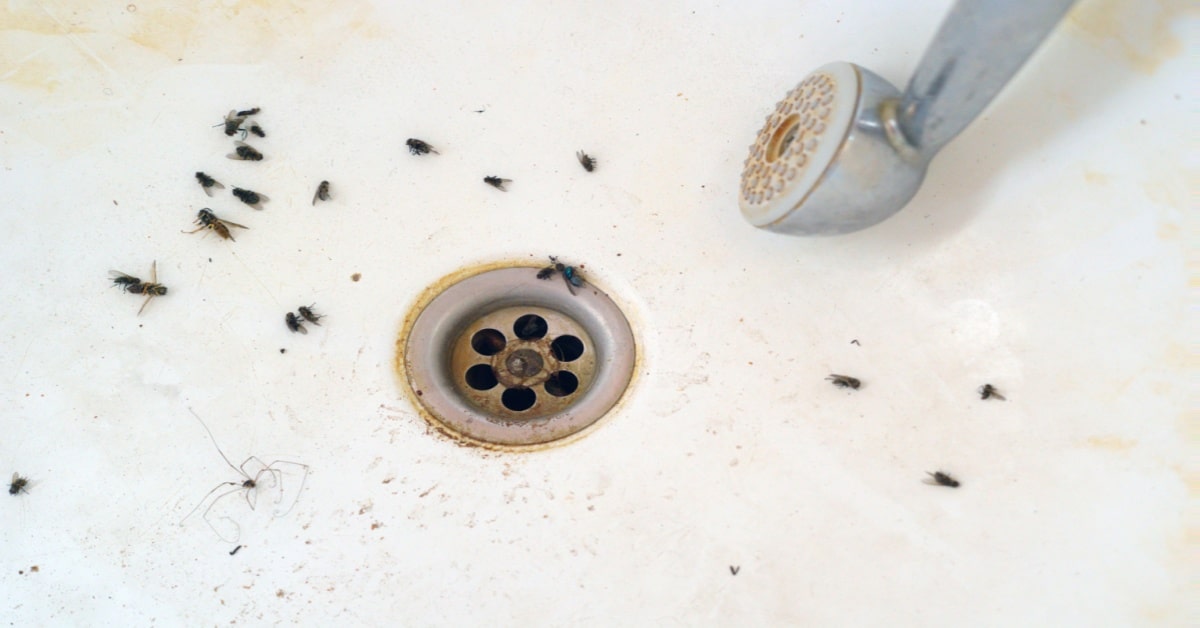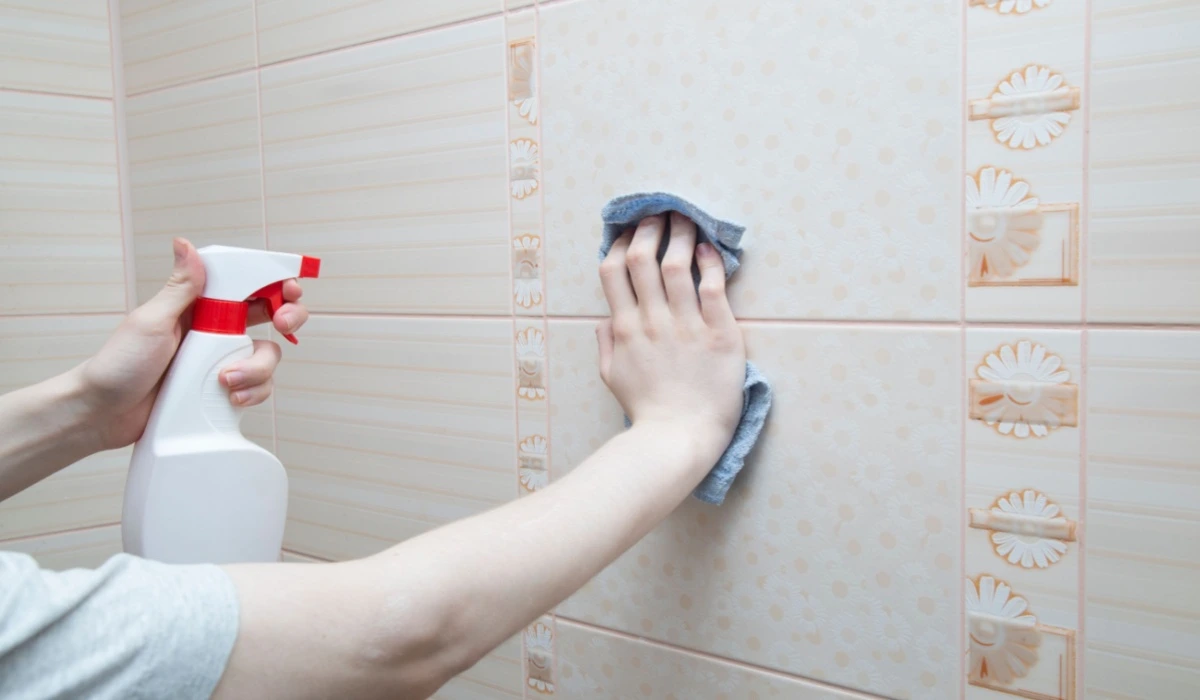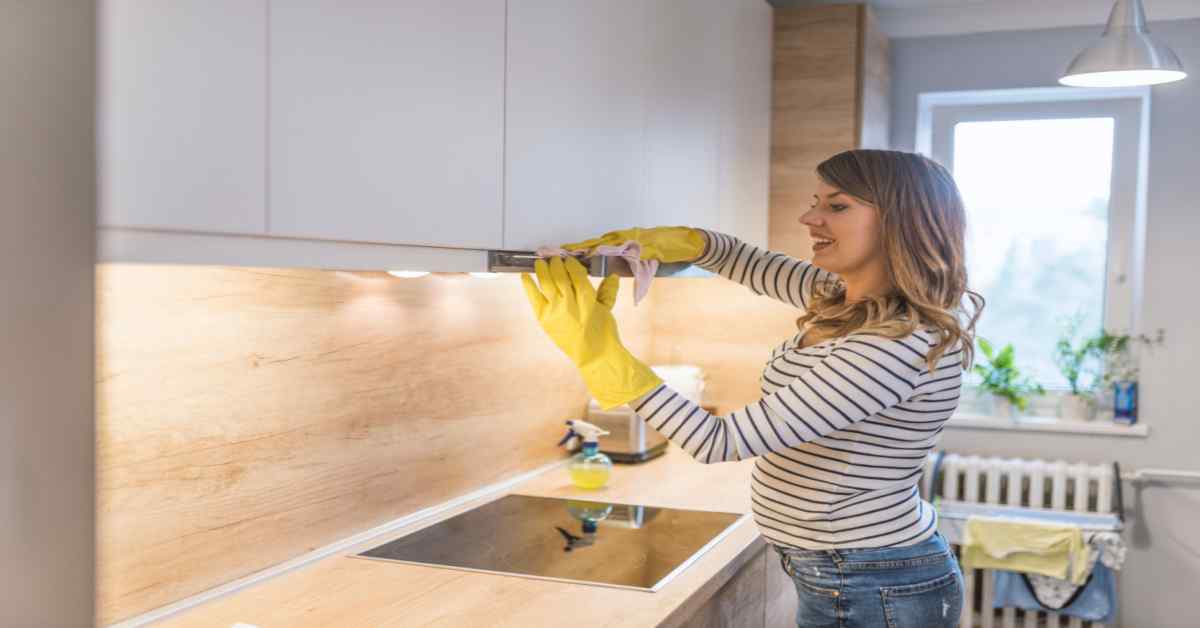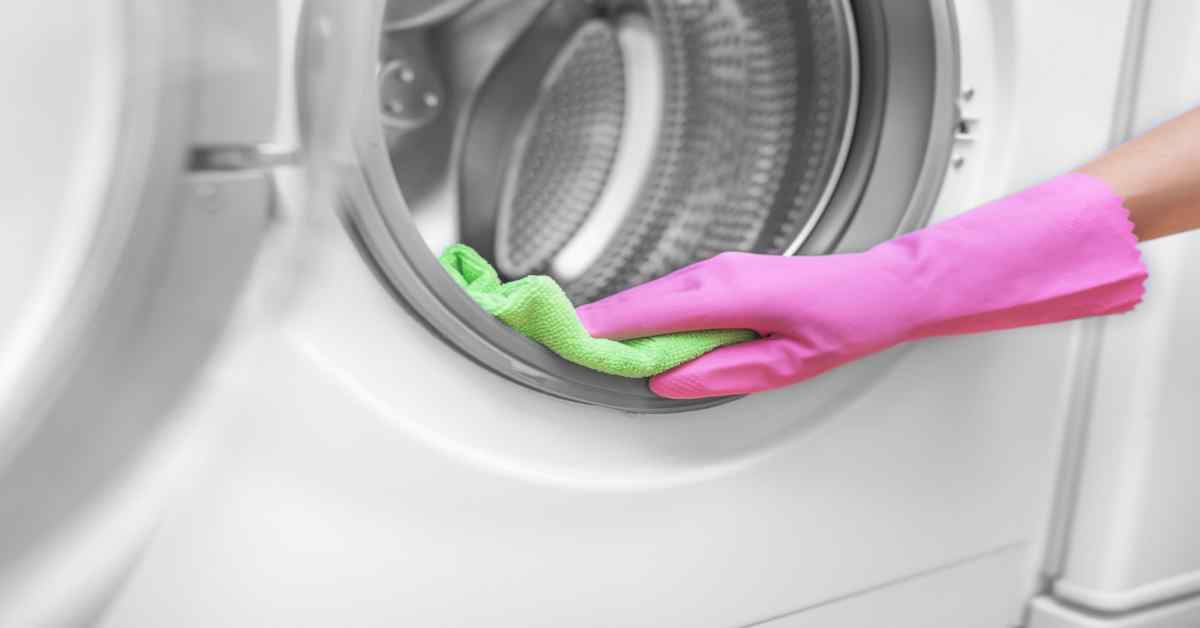Table of Contents
Quality Service Guarantee Or Painting Free

Get a rental agreement with doorstep delivery

Find the BEST deals and get unbelievable DISCOUNTS directly from builders!

5-Star rated painters, premium paints and services at the BEST PRICES!
Loved what you read? Share it with others!


Submit the Form to Unlock the Best Deals Today
Check Your Eligibility Instantly

Experience The NoBrokerHood Difference!
Set up a demo for the entire community
How to Get Rid of Bathroom Flies: 8 Quick Methods
Table of Contents
A clean bathroom is necessary to maintain hygiene and avoid disease. Usually found around wet regions or inside drains, bathroom flies flourish in moist surroundings where organic matter gathers. Not only are bathroom flies unpleasant, but they also indicate possible hygienic problems, including extra moisture or clogged drains. In this blog, we will explain how to get rid of bathroom flies. Understanding the particular kinds fixes the underlying causes of the infestation. Let’s follow a thorough strategy to eradicate and stop them from resurfacing, which will help you get rid of toilet flies.
What Are Bathroom Flies?
Bathroom flies are a collection of tiny flying insects found in bathrooms, mostly because of their damp surroundings. Found in restrooms, the most often occurring forms of flies are sewer, fruit, and drain flies. Usually attracted to the organic matter accumulation in clogged drains, moist corners, and stagnant water, these insects find perfect homes in bathrooms. Though they all have unique traits and behaviours, each of these flies prefers to mate in places where organic matter and moisture abound. If you are also worrying about how to get rid of sewer flies in the bathroom, then keep reading to know the best tips and methods.
Types of Flies Commonly Found in Bathrooms
The wet conditions that are frequently found around sinks, showers, and drains attract various types of insects, including fungus gnats and drain flies. You need proper knowledge about them to get rid of them. Here are different types of bathroom flies:
Quality Service Guarantee Or Painting Free

Get a rental agreement with doorstep delivery

Find the BEST deals and get unbelievable DISCOUNTS directly from builders!

5-Star rated painters, premium paints and services at the BEST PRICES!
Drain Flies:
Tiny insects with fuzzy bodies and moth-like wings, such as drain flies—also called moth flies—are usually seen next to sinks and drains where organic matter accumulates. Though they are harmless if left unbridled, they can annoy.
Fruit Flies:
Fruit flies are little brownish flies usually drawn to rotting fruits and vegetables. However, they can also be found in bathrooms, drains, and other places with organic residues, such as trash disposal units or around moist regions.
Sewer Flies:
Sewer flies are bigger than drain flies and are usually found in bathrooms linked to sewer systems. They can be a major problem if the plumbing is not well maintained since they flourish in surroundings that include decomposing organic matter.
How to Identify Each Type of Fly?
Many different types of flies can be attracted to things in your home. Here's how to identify some of the most common flies. Drain flies' fuzzy looks and moth-like wings help one identify them. Usually around 1/8th of an inch, these tiny creatures are most often found hovering around sinks, showers, or wet areas. Hence, proper sink maintenance is the key to a clean bathroom. Cluster flies are larger than the usual house fly species, with golden-coloured hairs on certain areas of their thorax and a dark-grey appearance.
Causes of Bathroom Fly Infestations
Bathroom fly infestations arise due to drain blockage, dirt accumulation, blockage, seepage, mixture and blockage in pipes. Although they don't usually bite or hurt people, these flies can be an annoyance when they take over a property. Here are some of the major reasons for bathroom fly infestations:
Inadequate Drainage: One of the most often occurring causes is insufficient drainage, in which organic matter, including trash, hair, and soap scum, gathers in pipes and offers ideal habitat for these pests. Apart from blocked drains, leaks, and moisture problems, these also help to cause infestations since flies find damp surroundings appealing.
Stagnant Water: Stagnant water in sinks, tubs, or standing puddles on the floor can also encourage fly breeding.
Dirt Accumulation: Moreover, dirt accumulation in difficult-to-reach places like behind walls or under sink traps might make the bathroom a perfect habitat for these bugs.
To hit these flies, you need to identify breeding grounds for them in order to remove them permanently. These microscopic insects are drawn to stagnant water, particularly in pipes and other drainage areas where organic debris can easily and quickly build. Hence, make sure to identify the breeding ground for the flies in the bathroom to get rid of them.
Signs of a Bathroom Fly Infestation
Seeing flies swarming around your sinks, drains, or other wet locations is the clearest indicator of a bathroom fly invasion. Usually, a clear sign of a more serious issue, these little flies gather in great numbers.
- Presence of larvae, which are found in drains or at sink and bathtub edges, these tiny, worm-like organisms devour organic matter.
- Musty smell around drains or damp spaces
- Tiny, black clusters of dots in areas of light
- Sinks and floor drains may have a black, slimy, gelatinous coating inside of them.
- Fly cluster, particularly on walls and ceilings close to nesting grounds.
Hence, eliminating bathroom odours is the best thing you can do to maintain a germ-free bathroom.
8 Effective Methods to Get Rid of Bathroom Flies
Bathroom flies can be very annoying and may be difficult to remove completely. Below, we will explain how to get rid of small flies in the bathroom in the easiest possible ways.
1. Deep Clean Your Drains:
Eliminating bathroom flies is mostly dependent on thoroughly cleaning your drains. Baking soda, vinegar, and hot water can be combined to break down organic matter in the drain and flush out fly larvae. Additionally, a drain brush is useful for cleaning away accumulation.
2. Boiling Water Treatment:
Boiling water is an easy but efficient way to kill larvae and flies from your drains. Directly pouring boiling water down the drain will help you clear the trash and wash away organic matter, drawing insects.
3. DIY Natural Remedies:
Natural solutions are an environmentally sustainable and safe approach to handling bathroom flies. The apple cider vinegar trap is a common approach whereby a little bowl of vinegar is positioned close to the infestation site. Dish soap drops help dissolve surface tension in the vinegar, drowning the flies. Poured down drains, the baking soda and vinegar solution can also be used to destroy larvae and clear organic debris.
4. Commercial Drain Cleaners:
If the natural solutions fail, think about utilising commercial drain cleaners meant to target organic debris and destroy fly larvae. These cleaners are made to break down soap scum, grease, and other trash that draw bathroom flies.
5. Addressing Leaks and Moisture Issues:
Reducing moisture and fixing leaks will help prevent flies from proliferating in your bathroom. Check that every pipe is correctly sealed and that any drips or leaks are quickly fixed. Lowering bathroom humidity with a dehumidifier or ventilation system is also helpful.
6. Proper Ventilation Techniques:
Proper ventilation is essential for maintaining a dry bathroom and stopping fly invasions. After showers and baths, use exhaust fans to lower humidity levels; also, ensure that windows or vents are positioned to facilitate air circulation.
7. Regular Cleaning and Maintenance:
Developing a regular toilet cleaning routine will help prevent fly attraction. Regular cleaning of your tubs, showers, and clean sink will eliminate any organic accumulation. Since most flies breed in your drains, be sure to follow a regular bathroom cleaning routine.
8. Professional Pest Control Services:
If you are powerless against the invasion on your own, you could have to hire a professional pest control company for a thorough bathroom cleaning. They may evaluate the situation, pinpoint the cause of the infestation, and offer focused treatments to eradicate the flies successfully.
If you are also thinking about how to get rid of washroom flies, these methods will surely help.
Prevention Tips to Keep the Bathroom Flies Away
It is important to take numerous preventative actions against restroom flies. Start with everyday routines, including routinely cleaning drains and maintaining clean bathroom surfaces after usage. This helps to avoid the accumulation of moisture, which is a main component of fly infestations. Second, concentrate on long-term plans like making sure your bathroom has enough airflow to keep the surroundings dry. As soon as leaks show up, fix them; avoid leaving sinks or tubs with stagnant water. Regular maintenance, like emptying drains and looking for organic build-up, helps greatly lower the possibility of next infestations.
Are Bathroom Flies Harmful?
Fly infestations should be taken seriously, especially in homes with people who have weakened immune systems. If the number of flies increases or they don’t respond to normal treatments, it’s important to get professional help. This could mean there’s a bigger issue with the sewage or plumbing systems.
Health risks of bathroom flies:
- Asthma: Flies can worsen asthma and respiratory conditions by reducing air quality and triggering allergic reactions.
- Allergies: Their skin and faeces can cause allergic reactions in sensitive individuals.
- Bacterial spread: Drain flies can carry harmful bacteria from sewage and decaying matter, which can contaminate surfaces or food.
- Myiasis: In rare cases, fly larvae can infect living tissue in unsanitary environments, although bathroom flies are not common culprits.
When to be concerned:
- Large infestation: Many flies can indicate a moisture or drainage problem that requires professional pest control.
- Persistent odour: Foul odours and flies indicate organic build-up, potentially harbouring germs.
- Health problems: Respiratory problems, asthma or skin reactions to flies indicate that immediate action is needed.
Get Rid of Bathroom Flies With NoBroker Cleaning Services!
Dealing with bathroom flies calls for preventative actions, good maintenance, and thorough cleaning. Are you worried about how to get rid of bathroom bugs? Maintaining the bathroom flies-free is now quite easy with NoBroker's professional bathroom cleaning services. Our experts are trained in deep bathroom cleaning to help you keep the germs and flies at bay. Our staff thoroughly cleans the restroom, removing grimy tiles and discoloured sinks and toilets. Contact us now for a clean and shiny bathroom!
Frequently Asked Questions
Ans: Fruit flies will not go away on their own. To eradicate them, actions like cleaning and eliminating breeding sites are required.
Ans: Though they should not be the first choice, pesticides can be used. More environmentally friendly and efficient remedies are deep cleaning, emptying standing water, and clearing organic matter from drains.
Ans: While some house flies are drawn to food waste or rubbish, bathroom flies—like drain flies—are attracted to dampness and organic matter in drains.
Ans: Alone, bathroom flies do not cause structural damage. But the things that draw them—like leaks and stagnant water—can cause mould and water damage over time. Quickly addressing these problems is essential to avoid more major issues.
Ans: Maintaining a regular cleaning routine, keeping drains free of organic debris, and guaranteeing appropriate ventilation help to prevent flies. Check and fix any plumbing problems often; as a preventive action, utilise natural deterrents or traps.
Loved what you read? Share it with others!
NoBroker Cleaning Testimonials
Best cleaning service by nb. Would recommend others too
I recently used NoBroker Cleaning Services for a deep house cleaning, and I am quite satisfied with the experience. The booking process was smooth and hassle-free, and the team arrived on time as scheduled. The cleaning professionals were thorough and well-equipped, ensuring every corner of the house was properly cleaned. They paid attention to details, including dusting, mopping, and scrubbing hard-to-reach areas. My kitchen and bathrooms, in particular, were cleaned to a high standard, leaving them spotless and fresh. Overall, NoBroker Cleaning Services provided good value for money, and I would recommend them to anyone looking for a reliable and convenient cleaning service.
Very good cleaning service provider I required next time staff friendly
team was very good The service was very professional Very satisfied by the work
Very good professional work done by house cleaning. Worth every penny.
Best service
Easy hassle free service from booking to execution. The interaction with customer care and service person were pleasant. Satisfied by the cleaning, much recommended.
I really well experience with bathroom cleaning un believable work with good hygiene. I recommend to everyone. I will continue with bathroom cleaning from last 4 months.
Recently opted the cleaning services from no broker. The service was on time and really good with affordable price. The technicians are polite and did their job perfectly.
Nice work
The finest service with affordable cost. Great 👍 work done by these people. Always Recommended
Nice service
Awesome service .. they are so good and super fast and does cleaning awesomely perfect!!!!
Best deep cleaning service provider in pune .Very polite and professional in their work. Best complements to the entire team..
Best flat cleaning service provider in pune Very good service.... Very quick and neat and clean home..... It was shining like mirror.. Highly recommended.
Superb house cleaning service provider in wakad pune Kitchen cleaning was done very sincerely. All equipment and chemicals were got along by the team. Punctual, sicere, good work quality.
Best cleaning service in Pune. Timely work till customer satisfaction. Thanks to team.
Thank you, nobroker cleaning services for your outstanding service. Keep up the fantastic work!
There service are best compared to price. Time was always perfect. I really appreciate their team for perfection and much more
Awesome house cleaning service provider in pimple saudagar .I sincerely appreciate your work. you put so much effort into your work that the house is immaculate 👌👍 thank you for your great service you have been very professional in handling our needs thank you ☺️
I have availed service for terrace floor cleaning. The persons who came for cleaning were very professional. They performed the task very nicely.
Best ac service provider in pune .Nice Work Good AC Service Immediately Response On Time All Call Attend
Best ac service provider in pune .Nice Work Good AC Service Immediately Response On Time All Call Attend
Great ac repair and service in pune .Very professional they understand customers problems and relevant cost wise, also work wise the are exc8
Cleaning was done very effectively. The staff also is very humble and resolved all doubts about the task. Will definitely recommend to anyone requiring deep cleaning services
Best house deep cleaning provider in pune .I got reference from friends. I deep cleaned my house first time. And I am very glad that I picked them. No other company cleans wall. But Nobroker is very effiecient wall cleaner.
One of the best service provider in Pune. Quality of work
Best cleaning services provider in bangalore .superb services provided by her
Best cleaning service provider in bangalore.It was a wonderful experience. Their team spent full time without any hurry and cleaned all the corners of the house. They are polite and very supportive. All of them
As per our request, They clean excellent with speed and provide me Affordable Cleaning service provider in bengalore .I am completely impressed with their professionalism and customer service. Thanks
Nice service
Highly recommended for the people who are looking for for packers and movers in chinchwad
Nobroker Cleaning Services is the go-to company for all your cleaning needs. They have a dedicated team that goes above and beyond to ensure customer satisfaction.
NoBroker Home Service Office has been a game-changer in my property search. Their user-friendly platform, efficient customer service, and transparent deals make the home-hunting process a breeze. I found my dream home with ease, and their support team was always there to assist. Highly recommended for hassle-free property transactions!
I recently used nobroker services to have my house cleaned, and I must say, I was impressed with their work. The team was prompt, courteous, and professional
Had a fantastic experience with Nobroker. They have made our moving into a locked home, super swift and smooth. Very polite, knowledgeable and efficient folks.
We are quite satisfied of what we get. They are quite professional and sincere towards their work.well done nobroker team
Nice job
Nice experience with Nobroker Cleaning service
Most Viewed Articles

Diwali Cleaning Tips and Guide: Make Your Home Shine for the Festival in 2025
January 31, 2025
14161+ views

How to Clean Bathroom Tiles: Easy and Effective Methods for a Sparkling, Hygienic Bathroom for 2025
January 15, 2025
11150+ views

How to Clean Kitchen Exhaust Fan Properly?
January 15, 2025
8963+ views

Deep Clean Your Washing Machine: Step-by-Step Guide & Tips
January 31, 2025
8618+ views

January 31, 2025
8328+ views
Recent blogs in
Bathtub Cleaning Solutions: Step-wise Cleaning Methods to Keep Your Tub Sparkling Clean in 2025
February 24, 2025 by Krishnanunni H M
Top 10 Bathtub Cleaner Liquids With Prices in India: Benefits and Uses in 2025
February 24, 2025 by Kruthi
Top 10 Marble Cleaning Liquids with Prices in India in 2025
February 23, 2025 by srivalli susarla
How to Clean Couches at Home: Effective Tips for Every Couch Material in 2025
February 23, 2025 by Kruthi
Top 10 Floor Cleaner Liquids with Prices in India 2025
February 23, 2025 by Kiran K S





Join the conversation!